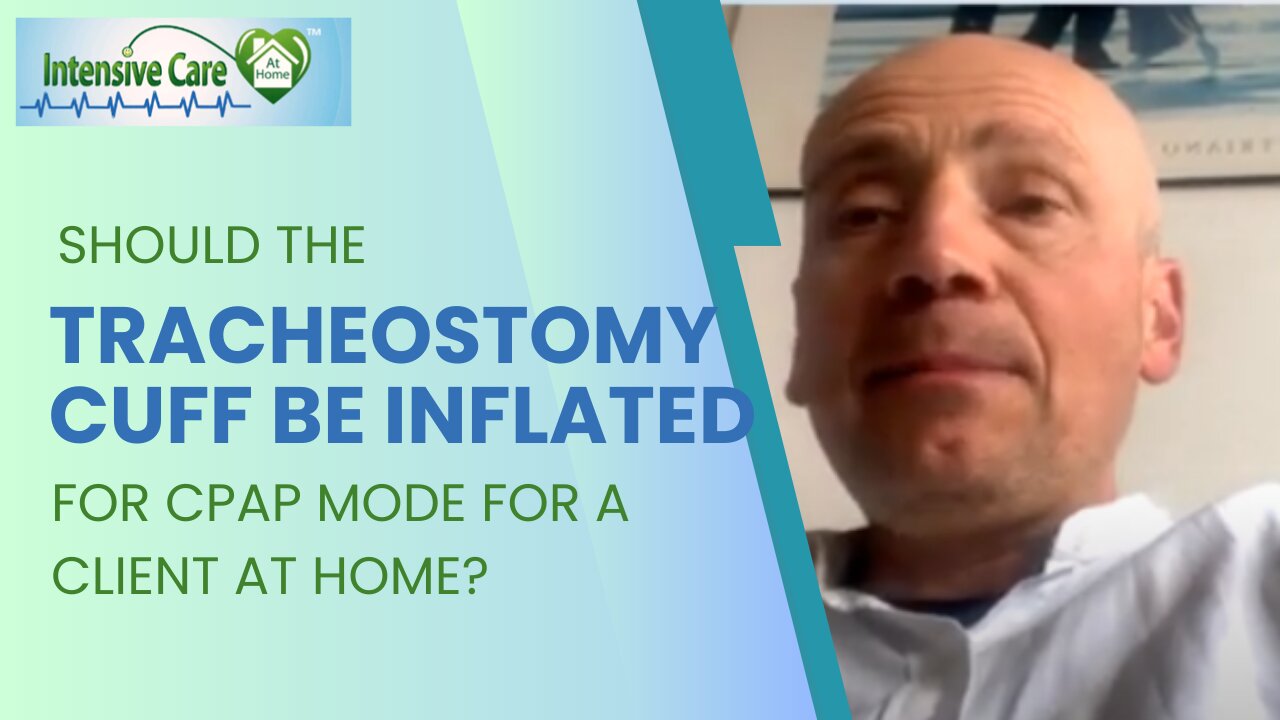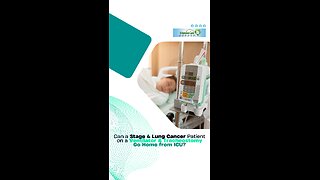Premium Only Content

Should the Tracheostomy Cuff be Inflated for CPAP Mode for a Client at Home?
Should the Tracheostomy Cuff be Inflated for CPAP Mode for a Client at Home?
Here are the phone options
One day 1:1 consulting and advocacy FACE TO FACE or via zoom $20,000 per day
https://intensivecarehotline.thrivecart.com/one-day-11-consulting-in-person-face/
Book your free 15-minute phone consultation here
http://intensivecarehotline.com/scheduling-appointment/
Call directly 24/7
+1 415-915-0090 USA/Canada
+44 118 324 3018 UK
+6141 094 2230 Australia
Email [email protected]
Get 1:1 consulting and advocacy
1:1 phone counselling
http://intensivecarehotline.com/one-on-one-counselling/
Become a member for families of critically ill Patients in Intensive Care
https://intensivecarehotline.com/intensivecaresupport-org-membership/
Immediate action steps http://intensivecarehotline.com/take-control-take-charge/immediate-action-steps/
https://intensivecareathome.com
And if you need a medical record review, click on the link and we can help you with reviewing your loved one’s medical records while they’re in ICU.
https://intensivecarehotline.thrivecart.com/review-of-medical-records/
Facebook Page: https://www.facebook.com/IntensiveCareHotline
Twitter: https://twitter.com/icuhotline
Song: Jarico - Island Music
supported by@FreeBackgroundMusicForCreators
#BackgroundMusicWithoutLimitations
https://bit.ly/2XoXFnb
Hi, it’s Patrik Hutzel from Intensive Care at Home, where we provide tailor-made solutions for long-term, ventilated adults and children with tracheostomies. And where we also provide tailor-made solutions for hospitals and intensive care units, whilst providing quality services for long-term ventilated patients and medically complex patients at home including Home TPN (Total Parenteral Nutrition), Home BiPAP (bilevel positive airway pressure), Home CPAP (continuous positive airway pressure), IV potassium and IV magnesium infusions as well as home IV antibiotics. So we cover the whole range that’s available for patients in intensive care. We can do that at home.
So in today’s blog, I want to answer a question from a reader, “Should a tracheostomy cuff be inflated for CPAP mode for a client at home?” The short answer is absolutely yes.
There are exceptions to the rule. The exceptions are for pediatrics or kids, because they, generally speaking, don’t have cuffed tracheostomy tubes. But for adults, the tracheostomy cuff for CPAP mode should be up because, otherwise, it’s just leaking and the PEEP (Positive End-Expiratory Pressure) won’t be delivered, which defeats the purpose.
More importantly, by not having the cuff up. There’s also a risk for aspiration and then your client ending up with an aspiration pneumonia. So, even with a cuff up, there is a risk for micro aspirations, but it’s much, much lower with the cuff being up.
Again, there’s one exception that I’ve seen over the years, where the cuff isn’t going up for adult patients with CPAP or with ventilation at home, the exception is if there’s a risk for pressure sores in the back of the throat in the trachea, but that’s a very rare exception.
I’ve never really seen it over many years with but one client in out of hundreds of clients, whether it’s in ICU or at home. So, but it also tells me that the person who’s asking this question probably doesn’t have a professional service at home because when you look at our website at intensivecareathome.com, you will be seeing a section there, the Mechanical Home Ventilation Guidelines.
When you look at the mechanical home ventilation guidelines, which are a result of 25 years of Intensive Care at Home in Germany and more than 10 years of Intensive Care at Home in Australia. The evidence-based mechanical home ventilation guidelines demand that only critical care nurses with a minimum of two years of critical care nursing experience can look after ventilated and tracheostomy patients at home. Anything else is not safe, even deadly.
It’s telling me that whoever is looking after this patient with CPAP and tracheostomy at home doesn’t really know what they’re talking about because otherwise, this question wouldn’t even come up because the CCRN (Critical Care Registered Nurse) would know that. And they would never have the cuff down.
I wouldn’t be surprised if this particular client is going back to ICU all the time and is not looked after properly at home and therefore, is at very high risk of either dying or going back into hospital case in point.
Continuation...
https://intensivecareathome.com/should-the-tracheostomy-cuff-be-inflated-for-cpap-mode-for-a-client-at-home/
-
 12:34
12:34
Intensive Care at Home
5 days agoCan a Stage 4 Lung Cancer Patient on a Ventilator & Tracheostomy Go Home from ICU?
18 -
 1:12:57
1:12:57
Kim Iversen
4 hours agoBill Gates Suddenly Says “Don’t Worry About Climate Change”?
65.2K34 -
 1:05:12
1:05:12
Michael Franzese
4 hours agoI Waited 50 Years to Tell You What Happened on Halloween 1975
22.4K9 -
 1:07:15
1:07:15
Candace Show Podcast
4 hours agoINFILTRATION: Charlie Kirk Was Being Tracked For Years. | Candace Ep 256
60.2K216 -
 LIVE
LIVE
Rallied
3 hours ago $1.32 earnedWarzone Solo Challenges then RedSec Domination
125 watching -
 2:34:30
2:34:30
Red Pill News
6 hours agoBoomerang Time - DOJ Investigating BLM Fraud on Red Pill News Live
44.7K10 -
 1:46:14
1:46:14
Roseanne Barr
6 hours ago“The Over Emotional Are Always Under Informed” | The Roseanne Barr Podcast #121
81.6K44 -
 3:24:28
3:24:28
Nerdrotic
7 hours ago $10.92 earnedThe WitcHER DOA | Box Office Massacre | Massive Industry Layoffs - Friday Night Tights 378
47.6K8 -
 14:54
14:54
IsaacButterfield
16 hours ago $4.04 earnedShe Called Out “Creepy Men It Didn’t End Well
25K46 -
 11:43:21
11:43:21
LFA TV
1 day agoLIVE & BREAKING NEWS! | FRIDAY 10/31/25
190K46